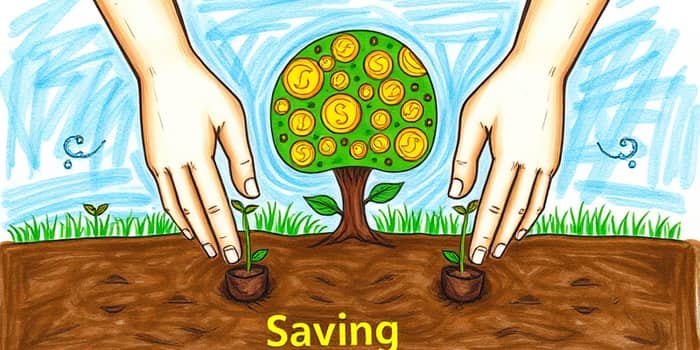
In an era dominated by instant gratification and subscription services, reclaiming control over personal finances can feel like a distant dream. Yet each mindful choice, however small, can accumulate into lasting stability and freedom. This article uncovers how cultivating intentional saving behaviors day by day transforms not just bank balances but overall well-being.
By embracing awareness behind spending, readers learn how to align every expenditure with deeper values and long-term aims. From tracking daily expenses to community-based swaps, the journey of mindful saving infuses purpose into every financial move.
Through evidence-backed strategies and real-world examples, you will discover practical steps that lead to profound financial resilience and joy on the path to lasting success.
At its heart, mindful saving involves making financial decisions with full awareness and purpose. Instead of reacting to marketing or impulse, individuals pause to assess whether each dollar spent aligns with their personal priorities. This shift from autopilot spending to deliberate action can spark major improvements in both finances and mindset.
Key practices include expense tracking, habit reflection, and structured budgeting. Far from being tools of restriction, these methods empower savers to understand their patterns and intentionally redirect resources toward what matters most.
Consider the story of Ava, who tracked her morning coffee purchases for a month. By noticing a $15 weekly habit, she opted to brew at home three days a week, saving over $200 annually. This simple change exemplifies how small awareness exercises add up over time.
Behavioral economics uncovers how cognitive biases shape spending. Anchoring effects can lead us to overspend based on arbitrary reference points, while loss aversion might make us cling to uneconomic habits. Mindful saving provides the antidote by introducing conscious reflection before financial decisions.
The psychology of money also shows how upbringing and emotions guide behaviors. For someone raised in a scarcity mindset, any extra cash may be earmarked for an immediate treat rather than saved for the future. By practicing mindfulness, individuals can reframe these deep-seated beliefs and foster healthier savings routines.
Research in positive psychology highlights the link between thoughtful spending and reduced stress. When purchases are intentionally chosen, they yield greater satisfaction, reducing buyer’s remorse and boosting overall happiness. This alignment between money use and personal values creates a virtuous cycle of well-being.
Imagine Lucas, who once felt guilty about buying new clothes. After reflecting on what truly brought him joy, he developed a shopping list based on quality and longevity. This approach not only curbed impulsive buys but also deepened his appreciation for each item he owned, illustrating the power of value-driven and mindful financial choices.
Mindful saving cascades benefits across emotional, financial, and social dimensions, strengthening resilience against unforeseen challenges.
Each of these benefits reinforces the others. Reduced stress creates space for clearer goal setting, while stronger relationships support accountability and motivation. The sustainable choices underpinning mindful saving also extend benefits to community and environment.
For example, choosing quality over quantity in clothing can reduce wardrobe waste and encourage local artisans, thereby advancing both personal finance and neighborhood economies.
Transformative changes often begin with tiny adjustments. Studies show that habit formation takes around 66 days. By linking a new saving behavior to an existing daily action, known as habit stacking, individuals can significantly boost their chances of success.
By embedding one small habit each month, savers witness accumulating returns. The initial effort to set up automation or meal planning often pays for itself in saved time and money.
Furthermore, habit stacking leverages existing cues. For instance, after brushing teeth each night, review the recent day's spending for a quick financial check-in, reinforcing consistent practice for success.
Goals shaped by the SMART framework—Specific, Measurable, Attainable, Relevant, Time-bound—anchor ambitions in reality. A goal such as “save $10,000 for a home down payment in two years” becomes actionable when broken into smaller benchmarks: allocate $1,500 from an annual bonus and set aside $350 each month.
Specific targets remove vagueness, measurability tracks progress, attainability assures realism, relevance aligns with personal priorities, and time-bound limits create urgency. This structure fosters confidence and sustained momentum toward financial milestones.
Regularly revisiting these goals with a journal or app helps maintain accountability, allowing for adjustments and celebrating small victories along the way.
Mindful saving transcends mere financial planning; it interweaves with ethical living and community engagement. By choosing locally produced goods and avoiding single-use items, savers also contribute to environmental sustainability and social welfare.
Community initiatives—such as neighborhood tool libraries, group bulk buying clubs, or swap meets—harness collective action to reduce costs and waste. These ventures exemplify how personal financial habits can ripple outward, fostering shared prosperity and resilience.
Take Maya’s book club, which evolved into a clothing swap event. Members traded gently used garments, reducing consumption while reigniting a sense of community and purpose.
Quantifying progress reinforces commitment. Tracking these key metrics highlights gains:
• Average food waste reduction of $1,500 per household annually.
• Grocery spending spikes of up to 54% when impulsive buys occur.
• A 66-day window required to solidify new habits.
• Achieving a $10,000 savings goal through incremental contributions.
Tools such as budgeting apps, automated alerts, and shared spreadsheets offer structure to sustain mindfulness. They transform abstract intentions into concrete reminders and reports, ensuring that savers stay engaged and informed.
Moreover, sharing progress with accountability partners or online communities can boost morale and spark fresh ideas for cost-saving innovations.
Mindful saving is not about drastic austerity but rather intentional, thoughtful choices that align with personal values and broader aspirations. Each small habit, whether automating transfers or embracing community exchanges, compounds over time into profound financial and emotional benefits.
Embark on this journey today: choose one practice that resonates—track an expense, set a SMART goal, or join a local swap—and experience firsthand how small steps can lead to monumental change in your financial life and beyond.
References





